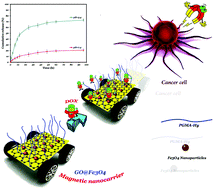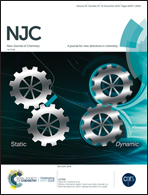Poly(glycidyl methacrylate)-coated magnetic graphene oxide as a highly efficient nanocarrier: preparation, characterization, and targeted DOX delivery
Abstract
Herein, we report the preparation of novel magnetic graphene oxide (GO) grafted with brush polymer via surface-initiated reversible addition–fragmentation chain transfer (SI-RAFT) polymerization and its application as a nanocarrier for magnetic- and pH-triggered delivery of doxorubicin anticancer drug. The RAFT agent, DDMAT, was firstly attached to the surface of magnetic GO nanosheets. The DDMAT-functionalized magnetic GO nanosheets were then used to polymerize glycidyl methacrylate (GMA) using an SI-RAFT method. Afterwards, the epoxy rings of the PGMA chains were opened with hydrazine (N2H4) moieties. The resulting nanocomposite was used as a drug carrier for doxorubicin (DOX) as an anticancer drug. DOX molecules were covalently loaded onto the nanocarriers via imine coupling and π–π stacking. The in vitro drug release study of the prepared nanocarriers revealed that DOX can be released under an acidic medium indicating a pH-sensitive behavior. Also, the MTT cytotoxicity assay of the nanocarriers showed excellent biocompatibility. It can be envisioned that the synthesized magnetic nanocarriers could be regarded as a promising type of anticancer drug delivery system (DDS).



 Please wait while we load your content...
Please wait while we load your content...